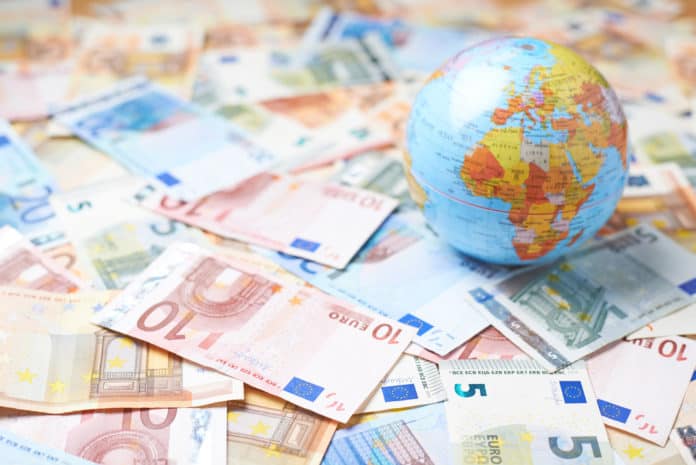Foreign Direct Investment occurs when an individual or firm in one country owns or controls a business interest located in another country. It is generally assumed that investment flows from regions of generally low anticipated profit to high anticipated profit, after allowing for risk. Foreign investment decisions usually take into account market demand conditions, trade restrictions, investment regulations, and costs of labor and transportation. Foreign Direct Investment benefits the country in which the investments are moving not only by pumping money into the economy, but also as a technology transfer through economies of scale. Trade restrictions can reduce an exporting country’s advantages in production costs or comparative advantage. In these cases, Foreign Direct Investment is the only feasible way to penetrate foreign markets.
With all of the positives that come alongside foreign direct investment, there are some drawbacks. Political agendas and propaganda sometimes use it as a scapegoat to further advance their campaigns, and they are not without cause. Especially in developing countries, large corporations that set out to maintain a multinational enterprise can breed corruption and remove wealth from a country rather than injecting it back into the domestic economy. In the long run, globalization and foreign direct investment improve the overall standards of living and economic opportunity of a nation, but these benefits are usually realized only in the long run. In the short run, there are drawbacks such as lower wages and more competition for companies manufacturing import competing goods and services. In countries where there is a democracy in place, most voters tend to stay away from politicians who welcome foreign investments. Therefore, poor countries usually remain poor, and the rich stay rich.
Foreign direct investment is a direct display to the rest of the world that investors are interested and confident in a certain nation’s economy. It also allows countries to reach a wider span of sectors that they would not have been able to touch without the resources and funding of outside investment. These improvements for one country can then spread to others in the area, causing a greater income for all. This leads to better infrastructure, improved healthcare, higher literacy rates, and modernize certain industries.
Countries can increase their inflow of cash by creating a business environment that makes investors feel as if their money is safe. A country risk analysis looks at the factors affecting how safe it would be to invest in a certain country. The political aspect looks at the stability of the political sphere, such as corruption, domestic conflict, and religious or ethnic tensions. Next is financial risk, which investigates a country’s ability to finance debt obligations. It looks at foreign debt as a percentage of real GDP, loan default, and exchange rate stability. Finally, the economic risk analysis looks at its economic strengths and weaknesses. This includes the growth rate of GDP, GDP per capita, and inflation. This data is combined to form a composite assessment of risk of doing business in said country, ranking them on a scale of 0 – 100, with 100 being the most trustworthy.
Top 15 Countries by Foreign Direct Investment Received
| Rank | Country | Net FDI Received (US $ Mill) |
| 1 | United States | 275,400 |
| 2 | China | 136,000 |
| 3 | Hong Kong | 104,300 |
| 4 | Brazil | 62,700 |
| 5 | Singapore | 62,000 |
| 6 | Netherlands | 58,000 |
| 7 | France | 49,800 |
| 8 | Australia | 46,400 |
| 9 | Switzerland | 41,000 |
| 10 | India | 39,900 |
| 11 | British Virgin Islands | 38,400 |
| 12 | Cayman Islands | 37,400 |
| 13 | Germany | 34,700 |
| 14 | Mexico | 29,700 |
| 15 | Ireland | 29,000 |
1. United States
Foreign direct investment in the United States has fallen 9% from 2017 to 2018, which can be attributed to a nearly one-third dip in cross border mergers and acquisition sales. The reason the United States has remained on top is based upon its large consumer base, the open mouth operation its central bank runs, a predictable justice system, high levels of productivity, highly developed infrastructure, and a great environment that attracts foreign investors. Countries that invested the most in United States based assets are the United Kingdom, Japan, Luxembourg, Canada, the Netherlands and Switzerland. These investors are looking mainly at US manufacturing, financials, trade, and communications. Most recently, increasing investment in chemicals from outside investors has attributed to the majority of growth within FDI influx in the US. The United Nations Conference on Trade and Development named the United States that first potential host economy for foreign direct investment and multinational enterprises, an accomplishment that surely correlates to the most FDI received in the world.
2. China
Coming in at number 2, China leads all Asian economies in direct foreign investment. It has also been ranked second most attractive to multinational enterprises since 2017. In 2018, they saw the biggest one year increase in their FDI, when it grew from USD 136 billion to 139 billion for a growth rate of 3.7%. China has been implementing more liberalization in its economic and political policies, as well as rapid development in the high-tech sector and the introduction of free trade zones, where all member nations remove their trade restrictions with each other. Over 60,000 international ventures began in China despite its trade war with the United States, causing a loss of USD 4 billion in US backed investments, and continued its increase in mergers and acquisition deals. Larger such deals included an acquisition from British multinational alcoholic beverages company Diageo of Sichuan Swellfun for USD 9 billion, and an investment from BMW to open up factories and distribution centers valued at USD 4 billion. Chinese buyers come from most developing Asian nations, with Hong Kong being the largest, along with the United States and the United Kingdom.
3. Hong Kong
Multinational Enterprises love Hong Kong for its regional headquarters, which was unfortunately hit hard in 2016 and 2017 by the fluctuation of intracompany loans. The services sector, such as regional headquarters and financial operations offices, saw the bulk of foreign investment inflows. China, the United Kingdom, the Netherlands, the British Virgin Islands, the Cayman Islands, the United States, Bermuda and Japan are the major contributors to Hong Kong FDI. Financials make up 80% of investments from abroad, including trade, construction, and communication. Hong Kong is geographically positioned to serve China as well as being a free port for international trade, serving almost as a gateway for the west to infiltrate Asian markets. Its trustworthy financial system with simple tax structures is backed by a strong judicial system and modern infrastructure. For example, construction permits and contracts are easily attainable with its risk-based approach to inspections.
4. Brazil
Brazil saw a decrease in FDI inflows for a number of years before finally turning a positive change in 2017. A slow start in 2018 was caused by a corrupt presidential election that lead to political uncertainty, eventually leading to a dramatic decrease in mergers and acquisition deals. The six acquisitions from Chinese firms and corporations were a sore spot when compared to previous years. However, sectors that were able to attract the attention of investors included metals, extractives, and automotive. The future of Brazilian foreign investment inflows depends on its political regime, and it how it plans on creating a welcoming environment for foreign investors. Main investment countries included the Netherlands, the United States, Germany, Spain, the Bahamas, Luxembourg, the United Kingdom, Canada, France and Chile. Oil and gas were big winners, with financials and electricity joining them. The domestic market of Brazil exceeds 210 million residents, making it an untapped gold mine for certain corporations who have yet to expand to South America. It also provides an abundance of natural resources, making vertical integration for multinational enterprises all the more enticing. Brazil is also gifted with a geographically beneficial position and a diverse economy that has sustained economic fluctuations time and again. There are still some risks, however, as taxation processes remain unreasonably complex, and bureaucratic delays for labor legislation that has been rigid for years.
5. Singapore
Financial and insurance activities in Singapore attracted investors from the United States, British Virgin Islands, Cayman Islands and the Netherlands. By stressing the importance of openness and trade when conducting business, Singapore has maintained positive relations with many of its economic acquaintances. By maintaining a relatively lax tax system, they have been able to attract international businesses to crease multinational enterprises or conduct FDI. There is also little corruption and a trustworthy history of political stability.
6. Netherlands
Financials and insurance reign supreme in attracting foreign investors for the Netherlands, with investors coming from Luxembourg, the United States, United Kingdom, and Germany. The Netherlands has maintained a positive relation with regard to foreign investment, a major trait being that there are little to no regulatory restrictions on FDI, and most corporations within its borders are multinational enterprises. While these investments may seem like a dream, it does not come without its drawbacks. The Netherlands does not have a particularly large population, and the presence of international conglomerates means that markets are extremely competitive. There have also been an influx of companies looking to move from London post BREXIT in order to continue working without any financial restrictions from the bureaucratic European Union.

7. France
France’s ‘urban free zones’, which support smaller businesses and local services, caused an increase in the number of mergers and acquisitions deals within the country. Paris is the main hub for multinational enterprises, and manufacturing and financials saw the most foreign investment coming from Luxembourg, the Netherlands, the United Kingdom, Switzerland, Germany, Belgium, the United States, Italy, Spain, Japan and Canada. The goal of current president Emmanuel Macron is to attract even more foreign investors to pump money into the French economy.
8. Australia
The 2008 Global Financial Crisis caused Australia to lose many of its international investors, but inflows have remained strong, streaming particularly heavy towards the energy sector. Services also received an impressive amount of investment from abroad, and the majority of the money came from the United States, the United Kingdom, Belgium, Japan, Hong Kong, Singapore, Luxembourg, the Netherlands, China, and France. Australia boasts a liberal fiscal policy towards economic expansion, stability and transparency in its judiciary branches of government, and its geographic isolation all contribute to the attractiveness of foreign investors to the island nation.
9. Switzerland
Switzerland is one of the safest places in the world for money to be places. Its extremely sound political and judicial system has allowed for an efficient capital market. However, because so much of Swiss GDP is made up of foreign investment, there are moments where its markets are extremely volatile and prone to fluctuations in the world market. The Netherlands and Luxembourg make up the majority of investments in chemicals and plastics, while foreign owned assets of financials and holding companies have declined since 2008.
10. India
The United Nations Conference on Trade and Development has ranked India amongst the top 10 nations for FDI. Manufacturing, communications, and financials saw strong FDI presence from Singapore, Mauritius, the Netherlands, the U.S., Japan, the U.K., Germany, France, the U.A.E., and Cyprus. Since becoming independent from the United Kingdom, the nation has down a full facelift in regard to its economic health. Along with India’s large population, multinational enterprises are attracted to its stable economic parameters, including government budget deficit funding and inflation.
11. British Virgin Islands
The British Virgin Islands are home to more than 350,000 multinational enterprises. Its rich diversification of Fortune 500 firms offers a perfect platform the nation to attract FDI from all over the world. Global investors are given incentives to set up shop on the island. Financials attract the majority of foreign investors, and its almost non existent tax system is a huge plus for international investors.
12. Cayman Islands
FDI is the cornerstone of the Cayman Islands, with financials and tourism bringing in the most foreign investments. Recently, the small nation has been looking to diversify its economy away from tourism, causing a fiscal shift to allow even more liberal policies to be put in place. The British based legal framework and lucrative financials are huge benefits to the country attracting FDI.
13. Germany
A decline in global demand for capital goods has caused the growth rate of foreign investment directed towards German based assets to struggle as of late. The recent COVID-19 outbreak has caused the International Monetary Fund to predict that the growth rate of its GDP will fall -7%. Despite all this, trade and financials have attracted investors from Switzerland, France, Italy, Belgium, Austria, Japan, Spain, and Denmark. The German economy is extremely diversified, and the country is free of both social and political corruption. The only downside is its high tax rate and somewhat stern labor laws.
14. Mexico
Manufacturing and electricity, along with water and gas, all attract investors from The United States, Spain, and Canada. Its entrance into the North American Free Trade Agreement has led to an influx of foreign investors from The United States and Canada. Mexico unfortunately has a large presence of organized crime within its larger cities, and corruption within its political system has led to a majority of its foreign investors to turn away from them.
15. Ireland
Ireland has a large share of multinational enterprises, but as with Switzerland, this has caused its markets to be volatile to global fluctuations. Many US investors decided to return home with their investments in 2017, causing Irish FDI to plummet. Despite this, the business climate is favorable, with the only major downside being the recent change in property taxes.












